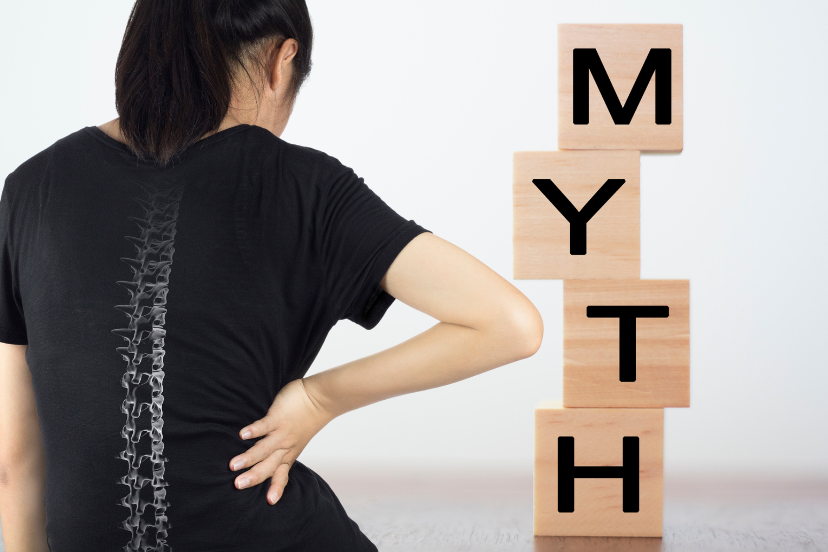Osteoporosis Myths: Unveiling the Truth Behind
Introduction
Osteoporosis, often labeled as the “silent thief,” stealthily undermines bone health, often without noticeable symptoms. Amidst the genuine concerns about bone strength, misinformation abounds, clouding our understanding of this prevalent condition. Let’s embark on a journey to debunk some of the most pervasive Osteoporosis myths and shed light on the truth.
1. Myth: Is Osteoporosis Solely an Elderly Concern?
Contrary to popular belief, osteoporosis doesn’t exclusively target the elderly. While aging heightens the risk, younger adults and even children can grapple with this bone-weakening condition. Genetic predispositions, lifestyle choices, and underlying health issues can all catapult osteoporosis into our lives at any age.
2. Myth: Does Osteoporosis Discriminate Against Gender?
Dispelling the notion that only women fall victim to osteoporosis is crucial. Although women face a higher risk, men are not immune to its effects. Men constitute a significant portion of osteoporosis cases, particularly as they age. It’s imperative for both genders to prioritize bone health.
3. Myth: Trivializing Osteoporosis as Insignificant?
Downplaying osteoporosis as an inconsequential part of aging is perilous. Fractures stemming from weakened bones can lead to severe complications, including chronic pain, disability, and mortality. Acknowledging the gravity of osteoporosis is essential to fostering preventative measures.
4. Myth: Is Osteoporosis Restricted to Certain Bones?
While fractures in the spine and hips are prevalent among osteoporosis patients, no bone is exempt from its reach. From wrists to ankles, every bone is susceptible to weakening due to osteoporosis. Adopting a holistic approach to bone health is paramount, encompassing strength training, nutrition, and lifestyle adjustments.
5. Myth: Can Osteoporosis Be Dodged?
Dispelling the fatalistic belief that osteoporosis is inevitable is crucial. While certain risk factors like age and genetics are beyond our control, proactive measures can mitigate the risk. A wholesome diet, rich in calcium and vitamin D, coupled with weight-bearing exercises, forms a robust defense against osteoporosis.
6. Myth: Is Osteoporosis Irreversible?
Confronting the myth of irreversible osteoporosis is vital. While treatment may not fully restore bone density, it can impede further bone loss, reduce fracture risk, and enhance overall bone health. Tailored treatments, comprising medications, supplements, and lifestyle modifications, offer hope for managing osteoporosis effectively.
Frequently Asked Questions:
1. What are the primary risk factors for osteoporosis? Aging, family history, hormonal changes, certain medications, and lifestyle choices such as smoking and excessive alcohol consumption elevate the risk of osteoporosis.
2. Can osteoporosis be hereditary? Yes, genetics play a significant role in predisposing individuals to osteoporosis. A family history of the condition increases the likelihood of developing it.
3. How can osteoporosis be prevented? To mitigate the risk of osteoporosis, prioritize a balanced diet rich in calcium and vitamin D, engage in regular weight-bearing exercises, abstain from smoking, limit alcohol intake, and undergo regular bone density screenings as per healthcare provider recommendations.
4. What are the early indicators of osteoporosis? Osteoporosis often manifests asymptomatically in its early stages. As the condition progresses, symptoms may include back pain, loss of height, stooped posture, and an increased susceptibility to fractures.
5. Can osteoporosis be reversed? While osteoporosis typically cannot be reversed, early intervention and treatment can slow down bone loss, diminish fracture risk, and enhance overall bone health.
6. How frequently should osteoporosis screenings be conducted? The frequency of bone density screenings hinges on various factors, including age, risk profile, and overall health status. Healthcare providers can offer personalized guidance on the optimal screening schedule.
Conclusion:
By dispelling prevalent myths surrounding osteoporosis, we arm ourselves with knowledge crucial for preserving bone health. From debunking the misconception of age-restricted osteoporosis to acknowledging the effectiveness of prevention and treatment, we empower ourselves to take proactive steps toward robust bone health. Let’s embrace accurate information, prioritize bone health, and banish those osteoporosis myths once and for all.




